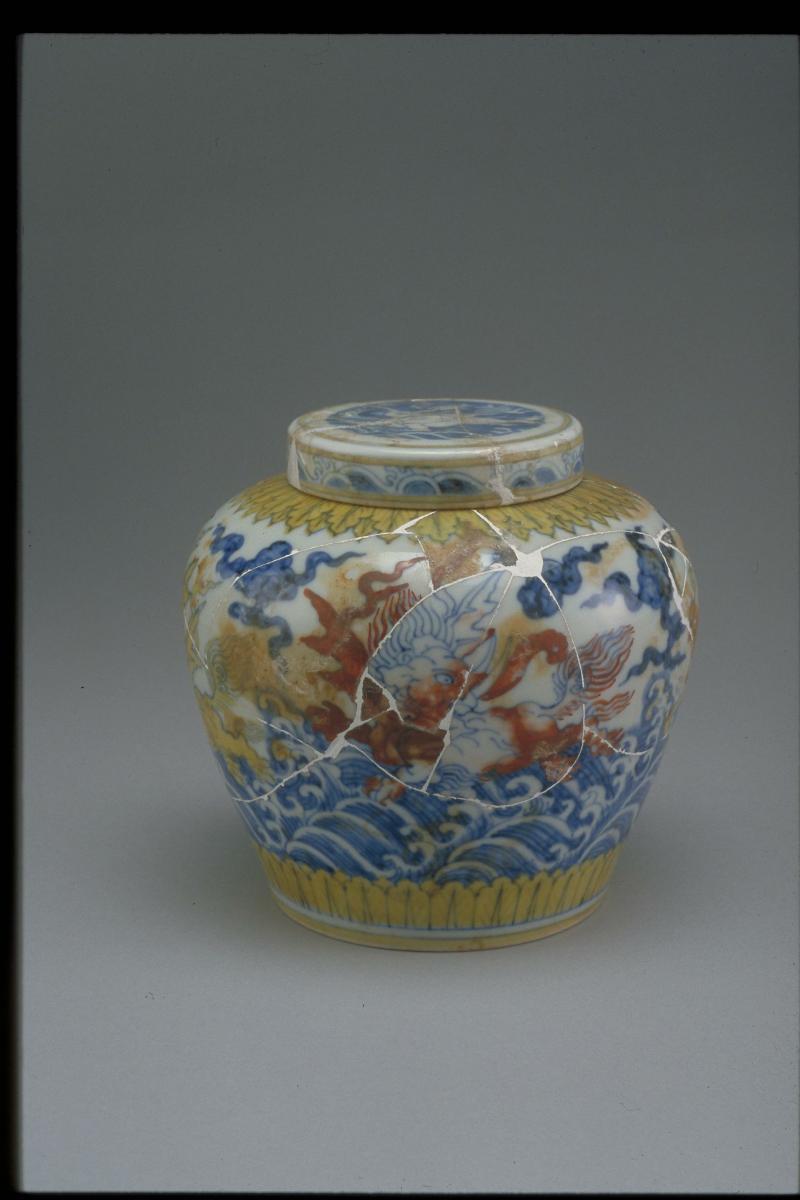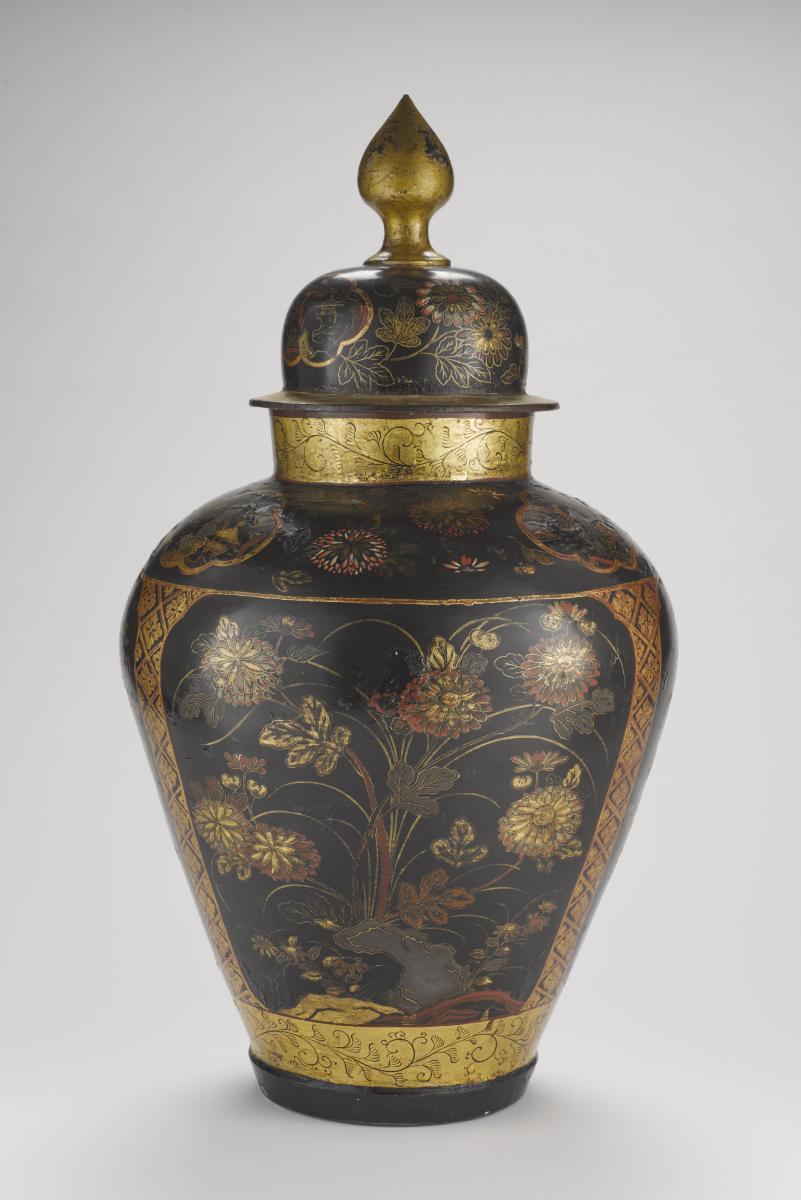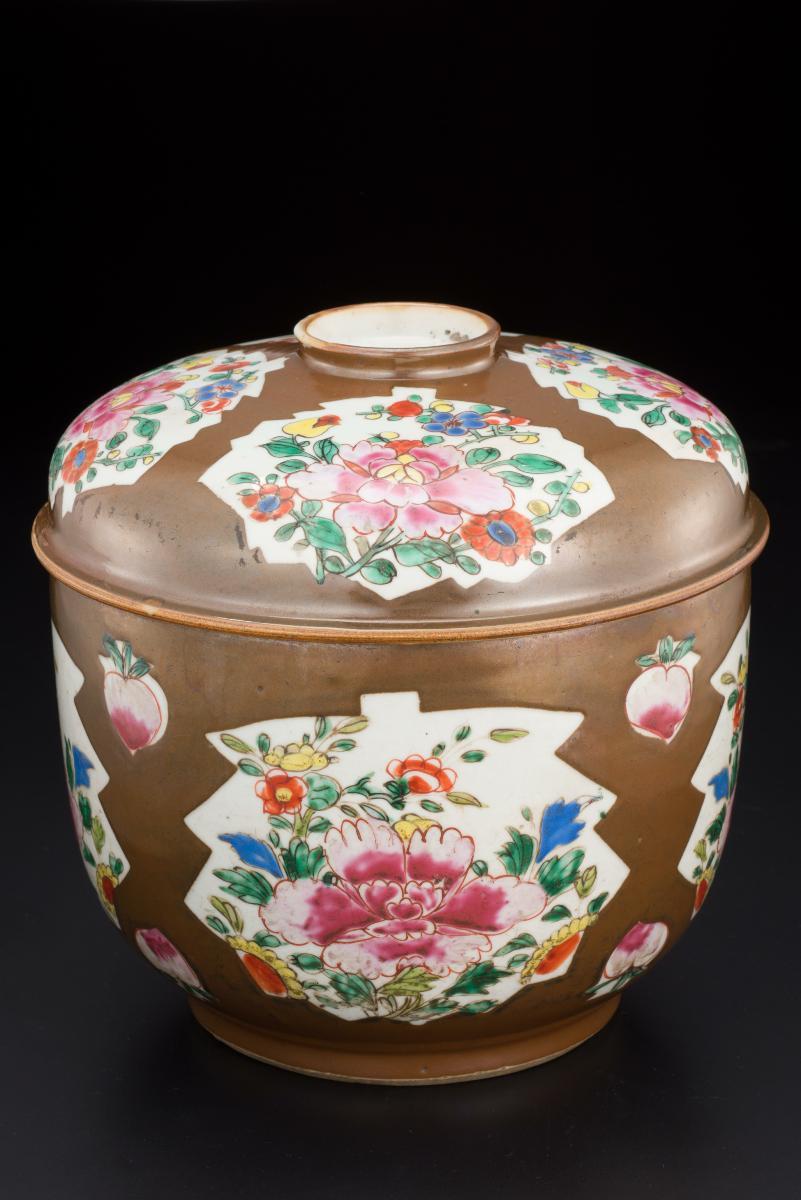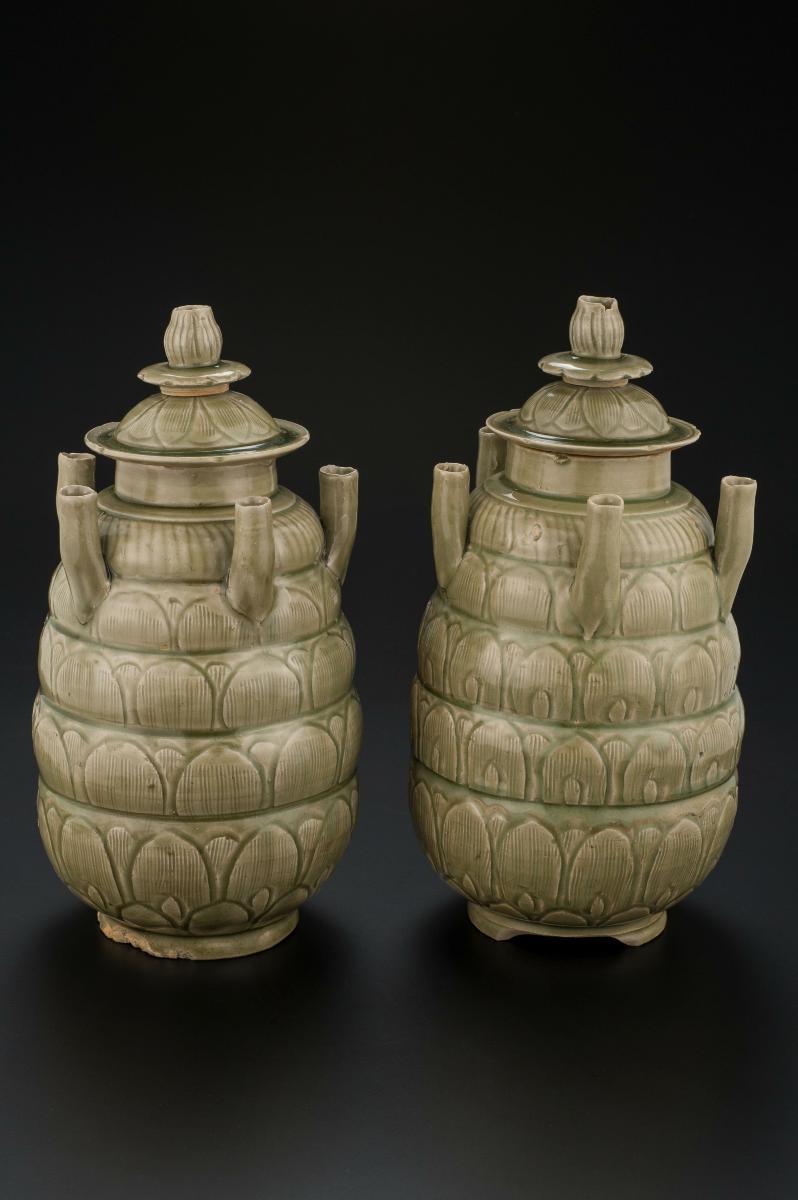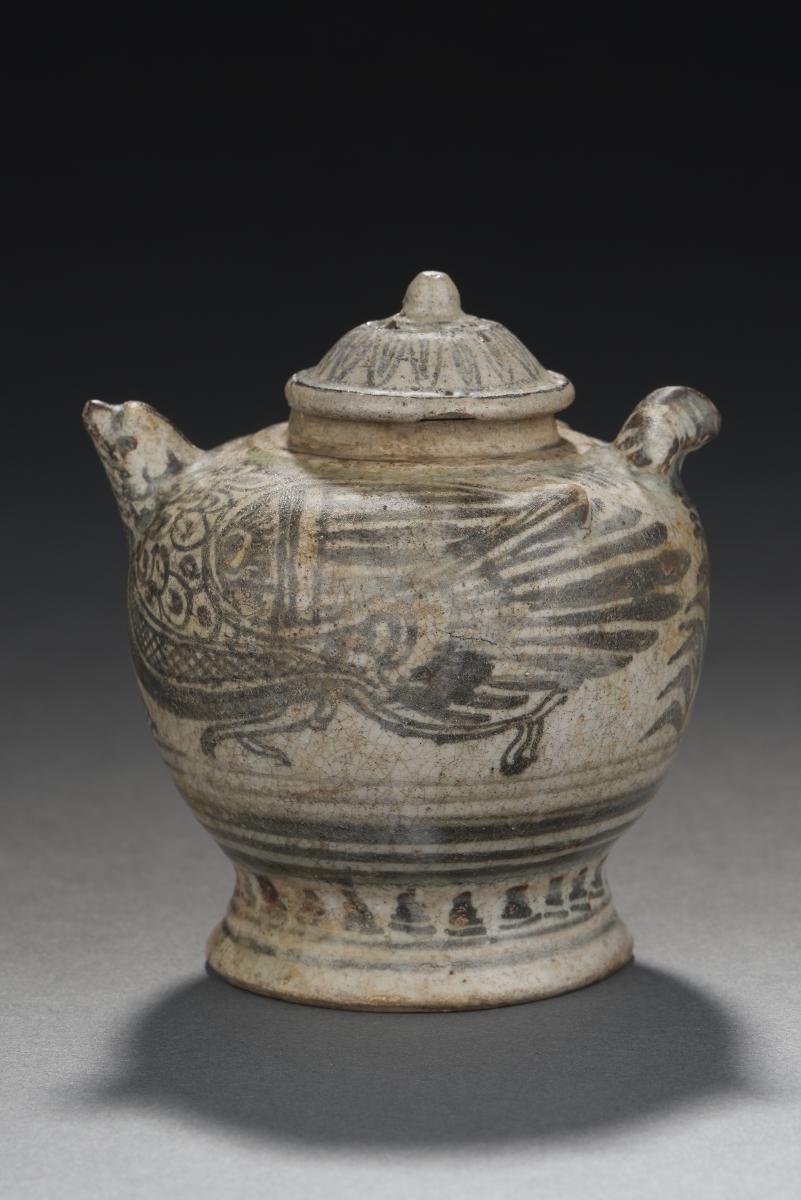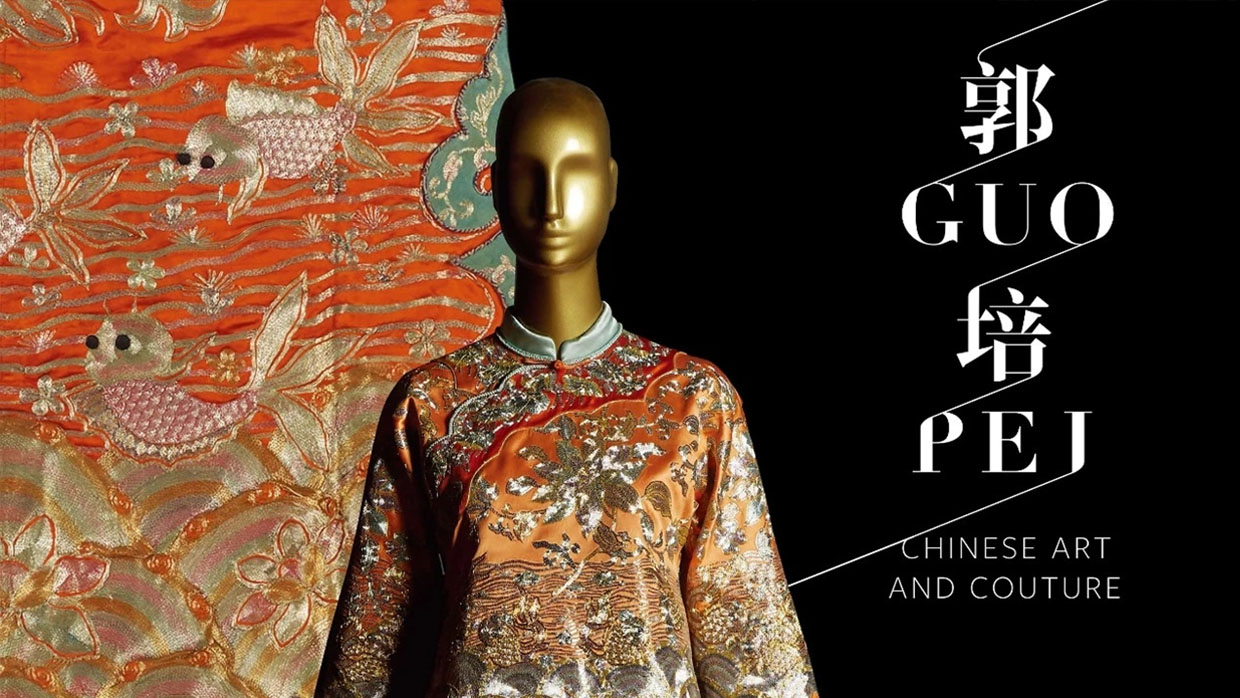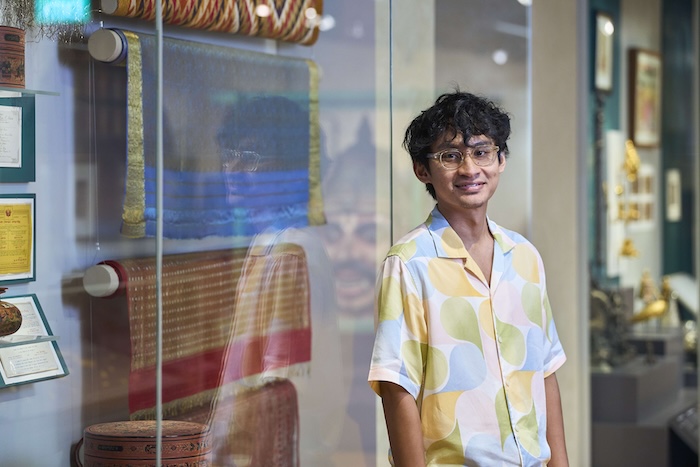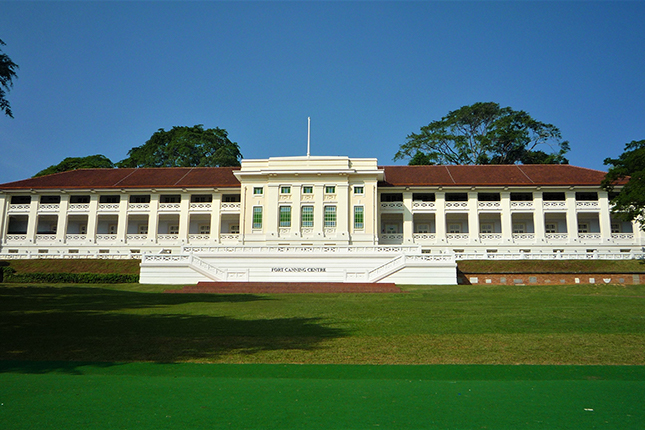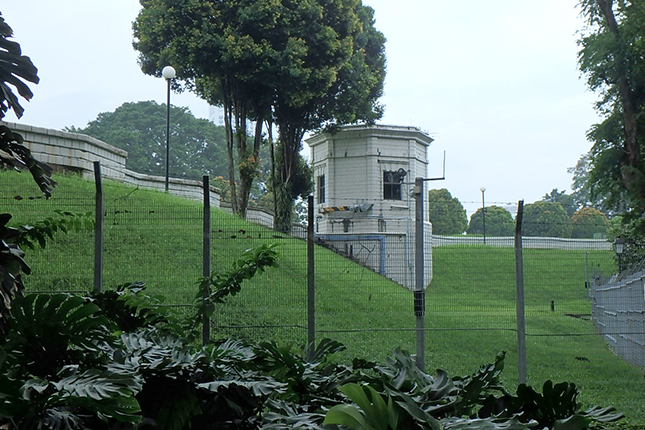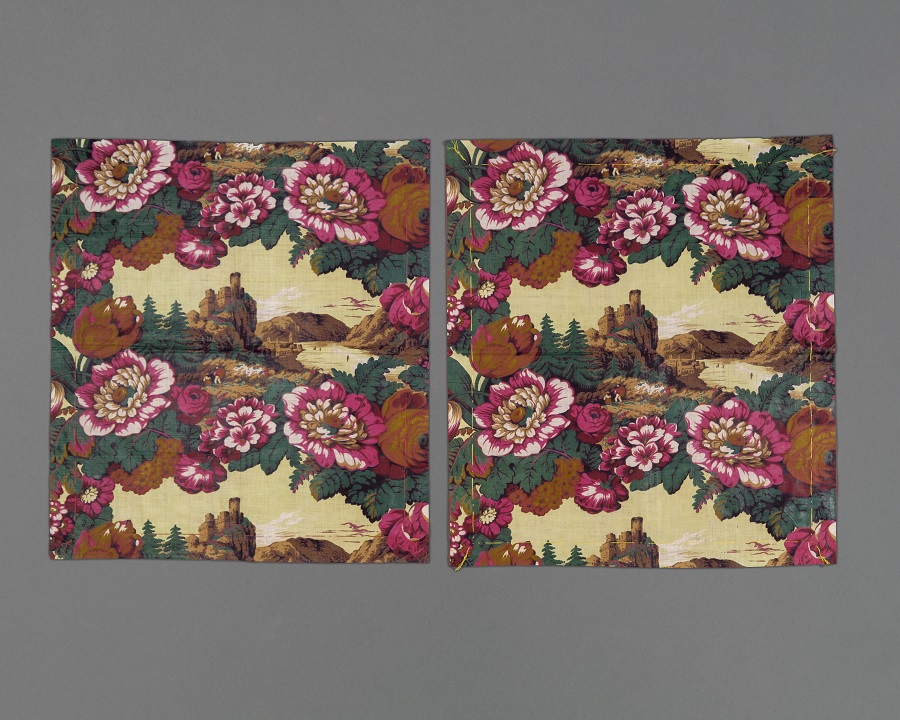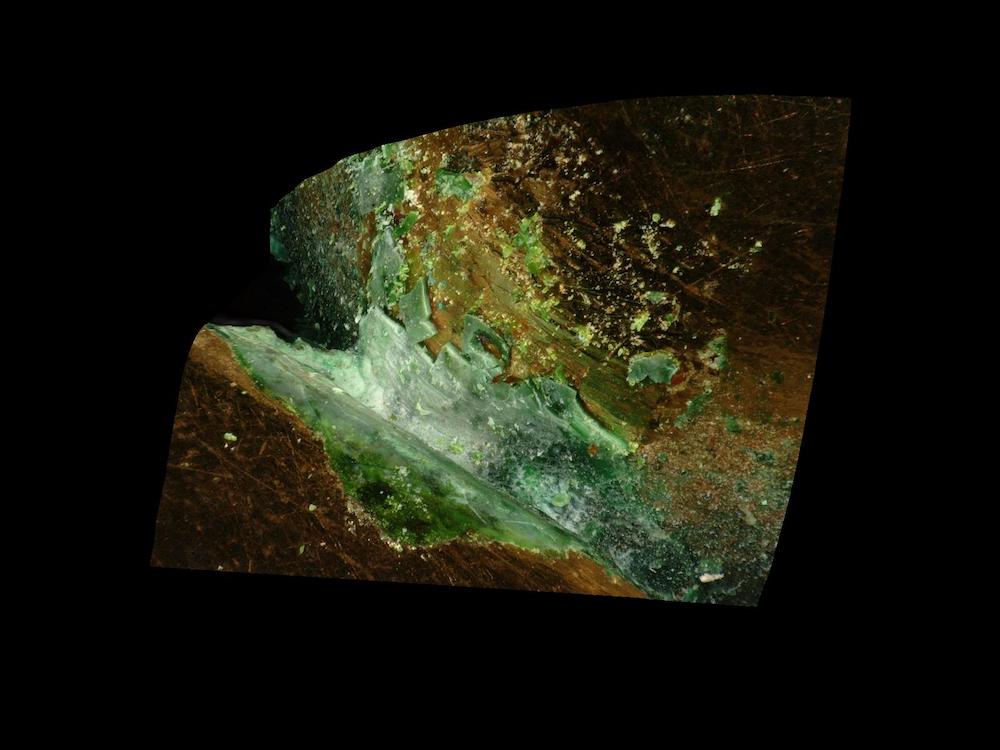Object size: 002: H1.2 x W7.2 cm
This Chenghua 'doucai' dish features two sea creatures, one in red enamel and the other in yellow, are depicted in motion, emerging from the sea. Another creature, with a horn on its head, is painted in underglaze blue and decorates the lid. The significance of this heavily reconstructed jar lies in the tian 天 mark on its base, which means ‘heaven’ (see insert). During the reign of Zhengtong (1436–1449) and Jingtai (1450–1456), this character was considered taboo as the emperor was known as ‘Son of Heaven’ ('tianzi' 天子). At present, only jars decorated in doucai 斗彩 style have been found with this mark. It is thoguht that such jars were used in rituals that invoked Heaven.Doucai 斗彩, ‘fitted colours’, is used to describe porcelain that combines both underglaze blue and enamelled decoration. Cobalt blue pigment is used as an outline for the designs. The ware is then glazed and fired before being coloured in with overglaze enamels, in shades of red, green, yellow and purple.Although produced later during the Kangxi period, reign marks of an earlier period were often used on Qing imperial ceramics as an expression of respect for the early Ming Emperors such as Chenghua who commissioned high quality, innovative porcelain.




